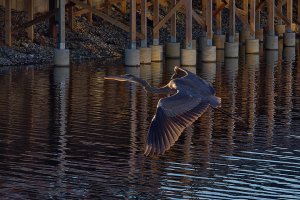I've got the RF 50/1.8 and I don't really care that it's great "for its price". Even at $100 I spent for it, it's essentially an expensive lens cap for me. I'd rather have an $800 RF 50/1.4 that doesn't have nervous bokeh or chromatic aberration and actually have it be a lens I want to use.
I think there's basically two schools of lens design for 50's:
- the double Gaussian ones, basically a symmetric design of 3-4 lenses facing 3-4 of similar but reversed shapes. It's been around a century, and makes good not great images, can be very compact and relatively cheap. All the EF 50mm's were in this family including the initial 1.0 and 1.8, the later 1.4, the consumer-grade 1.8 and final 1.2.
- new computer-aided designs whose lens diagram is unrecognizable, and which is absolutely huge but super-sharp and well-corrected. The Zeiss Otus 55/1.4 and RF 50/1.2 are in this family. I think Sigma and Nikon or Sony also have such lenses?
Canon basically needs a good f/1.4 from both schools, I thought for a long time.
It seems like if you're going for the modern, huge design, then there's not a huge weight or size or cost savings going for 1.4 instead of 1.2 so you might as well go for 1.2. Is that the feeling you get? Or are there modern 1.4 with as good image quality as the RF50/1.2 but far smaller size weight and price?
Then if you're content with the older design, you could have a 1.8, 1.4, 1.2, or even 1.0, with steadily increasing size weight and cost, so here, smaller does have a definite benefit.
OK, so a point I've made a few times and doesn't seem to convince many is that on RF, 1.8 is the new 1.4. (I actually have argued the f/4 trinity, weith 100-500, are the new f/2.8, but the same argument applies here.) In the film era, even shooting the fastest films, it was nearly impossible to get perfectly in focus even on relatively steady subjects, unless they were centered or you took the time to use the dedicated focus sensor. I would center, focus, reframe, and trip the shutter, but because the focal plane wasn't a sphere, the subject wouldn't be in focus after recomposing. Then you had grain. Because of these you couldn't use big image sizes, often 4x6" or something. And because of that, you needed a huge aperture to create enough bokeh so that even at small image size there was a clear difference between subject and background. Meanwhile, grain got crazy with higher ISO. Even ISO800 was unpublishable in many cases. So again you wanted big aperture. Finally, without IS, you had to keep the shutter fast, and AGAIN, big aperture was needed.
In contrast, now, AF absolutely nails the subject eyelashes every time even for moving subjects. The image is virtually noise-free. IS ensures your subject is sharp even for long exposures. So with the subject so sharp, you can now enlarge to 10x15" even with ISO5000. That in turn means the bokeh from a modest f/1.8 now suffices to show the pop from your noise-free, perfectly-focused subject with no hand shake blur, from its background. (And in fact f/1.2 bokeh is so in your face at such image sizes that bokeh becomes the story, not the subject.) And you don't need the big aperture to keep ISO down or shutter speeds short.
SO.................
My logic or facts may be wrong so I invite corrections, but, it seems to me, that we basically DO ALREADY have "the two 50mm f/1.4's" I mention. But the new-school design was bumped up to f/1.2 because there was little extra size weight or cost penalty given that an new-school f/1.4 would be nearly as massive. And the 50/1.8 is again doing the job on an R5 that I needed the 50/1.4 to do on my EOS-1N, 1V, and 3. And 1Ds and 1DsII and 1DsIII.
I've always shot a huge amount of 50/1.4 and for years I've been waiting for the RF 50/1.4, but it's possible I've already bought them. (I sold the 1.2 though--didn't care for the football-shaped highlights in the corners, and just never "needed" 1.2 even at night.)

